Belief eBay
On eBay, drop shipping, or fulfilling orders straight from a wholesale source, is permitted.
Dropshipping is a controversial topic on eBay. While many people believe that dropshipping is prohibited on eBay, this is not the case. Instead, eBay enables dropshipping in a limited number of situations. Dropshipping is legal if you fulfill orders directly from a wholesale provider, according to eBay.
It is not permitted to list an item on eBay and then purchase it from another vendor or marketplace that ships directly to your consumer.
If you violate eBay policy, you may face a variety of consequences, including administratively terminating or canceling listings, hiding or demoting all listings from search results, decreasing seller rating, purchasing or selling limitations, loss of buyer, or seller protection, and account suspension.
There are following points are as follows:
No Inventory:
Because each order is sent directly from the supplier to the buyer, the dropshipping approach is convenient and does not require inventory. It is not necessary to purchase and store products to begin selling.
Setup is Simple:
To start a successful dropshipping business, all you need to do is create an eBay Seller account and find a wholesaler or supplier who would drop ship on your behalf.
There is No Charge for Traffic:
eBay is one of the most well-known and largest online marketplaces and auction services for selling and purchasing things. This indicates that the platform has a sizable and loyal consumer base. Gain access to a large audience with very little work on your part.
There are no upfront costs:
Dropshipping allows you to get a taste of the business world without having to put any money into it. Dropshipping on eBay does not require any beginning funds or subscription fees.
Flexibility:
On eBay, dropshipping is a business that anyone may start from anywhere. It doesn’t matter if you’re at home, at work, or halfway around the world. All a merchant requires is internet access. This business strategy is adaptable and simple to implement alongside a regular job.
Low-Risk:
Dropshipping on eBay is easier than running a regular store if you have reputable suppliers. Dropshipping suppliers handle the fulfillment, reducing risks and expenses associated with premises, people, equipment, and other factors. Even if the company fails, you will not lose money or have to cope with anything.
Disadvantages of Dropshipping on eBay:
While eBay dropshipping has many benefits and convincing advantages, there are some cons to consider before entering this business model.
High Competition:
Due to the many benefits, such as easy setup, low risk, and investment approach, dropshipping on eBay is a very appealing business model to many online sellers. This creates fierce competition. Many merchants sell the same products, so it’s important to stand out.
You Don’t Own Customers:
By dropshipping on eBay, merchants help eBay build its brand with every sale they make. This means, that merchants don’t own the customers. They are mostly there for the platform, not a specific business. When someone asks where you got something from, the answer is “from eBay”, not the seller.
Responsibility:
According to eBay policy, merchants are fully responsible for the fulfillment of their listed items. If a supplier runs out of stock or doesn’t deliver on time, the merchant gets negative feedback, which could later result in a severe drop in sales and account suspension.
Hard to Find Suppliers:
This is one of the biggest cons of dropshipping on eBay. It’s very difficult to establish excellent wholesale relationships with suppliers. Only a couple of them will offer drop shipping services and partnerships without solid proof that a merchant can generate enough sales.
Little to No Customization:
An eBay drop shipper doesn’t have the opportunity to build or grow their brand and brand identity, as it gives no options for customization when it comes to products and fulfillment. Their logo won’t be on the product or the box, so eBay customers won’t associate the product with their business.
No Control over the Supply Chain:
If you decide to drop ship products on eBay, keep in mind the negative effect on the ability to provide quality customer service. In this business model, merchants solely depend on the dropship supplier, hoping for a good outcome and fulfillment.
Low-Profit Margins:
To maintain a status amongst competitors, merchants need to lower prices when dropshipping on eBay. The platform also charges listing fees and further reduces profit margins by taking up to 10% of the total sale price. To make money with eBay dropshipping, huge sales volume must be maintained every month.
eBay Dropshipping Policy:
If you want to start dropshipping on eBay, it’s important to know what is and isn’t allowed within this particular business model.
No Involving Other Marketplaces:
According to eBay’s dropshipping policy, merchants are not allowed to purchase items from similar marketplaces that ship directly to the customer, such as Amazon, AliExpress, and others.
Listing Fees and Delivery:
If you wish to dropship on eBay, be ready to pay listing fees for every product. Fees must be paid even if the product doesn’t sell. Merchants also need to guarantee delivery within 30 days.
Failure to Comply:
If a merchant fails to meet the eBay dropshipping policy and requirements, eBay can lower, hide, or remove their listings. Breaching the policy can also result in a lower seller rating, further restrictions, loss of buyer or seller protection, and ultimately even account suspension.
5 steps to start dropshipping on eBay:
Here’s what you need to do to turn an online business into eBay dropshipping success.
Step 1: Find Your Niche and Products How to choose a niche or a product to sell on eBay?
The possibilities are close to endless, as almost anything can be sold on this platform. Either go with your passion or find out what’s hot right now and jump on the bandwagon. Choose the products that best suit your business to dropship on eBay.
Finding a niche is not always easy, as most entrepreneurs want to please all audiences. However, if you aim to sell to everyone, you will most likely sell to no one. It’s important to find a target audience and niche market to emphasize your business.
How to Find a Niche.
Soul search: Find something you’re interested in and good at. It’s easier to stay motivated and get others excited about a product you’re passionate about. So pinpoint some of your interests, hobbies, talents, or experiences.
Assess Ideas:
To achieve drop shipping success, use tools like Google Trends, Quota, or Google Keyword Planner to investigate current trends, searches, problems, and existing solutions to see how your product can help or fit in.
Test Your Niche:
Testing ideas is the best way to see whether or not your online business will be successful. Test the products on friends and family, set up a Kickstarter campaign, or create a landing page on sites like Lead Pages and test your niche.
Step 2: Research the Market and Competition:
One of the main downsides of doing dropshipping business on eBay is the high competition. If you think of something unique to sell, chances are it’s already on the market, including dozens of cheap Chinese dupes.
However, the existence of competition is not necessarily bad. It may tell you that you’ve found a profitable niche. You need to thoroughly research and analyze competitors and the market to find out if you have what it takes to stand out. This can be done via market analysis.
How to Do Market Analysis:
Research the Industry and Identify the Target Market. Find out all there is about the market and your target audience. What are their shopping habits, expectations, and experiences? Where do they shop? What affects their decisions when it comes to purchasing products? How do they find products? What are their values and interests? What is the current state of the industry and trends? Gather data on the overall industry outlook and growth predictions.
Research the Competition:
Scoping out the competition is one of the main tasks before entering a specific market. To come up with ways to make your product stand out amongst others, it is necessary to understand what the competitors are offering.
What sells and why? Why should customers choose your product over another? For a serious comparison, conduct a SWOT analysis to highlight strengths, weaknesses, opportunities, and threats. Know Your Obstacles. Before entering the world of eBay dropshipping, list all the barriers that could stop you from entering the specific product market. Evaluate the strengths and weaknesses.
Can anyone enter the market? When? Are there any regulations or limited access to suppliers or resources? What could stop a merchant’s intent to sell online?
Step 3: Find a Supplier Finding the right product supplier for a dropshipping business on eBay is not easy
As merchants are not allowed to buy and sell items from other marketplaces, the only option is to find wholesale suppliers for their online store that are willing to do eBay dropshipping.
It is crucial for eBay dropshipping merchants to find reliable, quality suppliers. While customers buy products from the merchant, the suppliers are the ones responsible for product quality, packaging, shipping, and fast delivery. The merchant’s reputation depends on the supplier. It is possible to dropship on eBay from many sites and marketplaces.
The resources can be divided by:
Local Suppliers. Those wholesale distributors are the ones who ship products from warehouses within your market, for example, within the USA, Australia, United Kingdom, specific European countries, the EU, and more. By choosing local suppliers, merchants can offer faster and cheaper shipping to their local customers.
International Suppliers.
These are wholesalers with storage mainly in China, although some international suppliers have warehouses around the world. It is important to take into consideration that international distributors will most likely offer longer shipping times and higher rates for buyers.
When choosing the best wholesale supplier for your dropshipping business, take into account: Type of the distributor Warehouse location Shipping time, and cost Free or international shipping Return policy Payment options Benefits, such as loyalty rewards, and more.
Step 4: Set Up an eBay Seller Account Setting up a seller account is simple and easy.
Sign up on eBay and create a profile. Once it’s done, click on the “sell” button and follow the instructions. To turn your regular eBay account into a seller account, a payment method needs to be connected. eBay uses it to charge selling fees for managed payments, which they invoice at the exact time of the sale. When the profile is done, it’s time to manage the specific dropshipping settings.
The recommended settings to dropship on eBay are:
Store Name Payment Method:
Business policies Global shipping program opt-in Excluding shipping locations eBay seller hub opt-in Enabling out-of-stock Return preferences Unpaid item assistant setup Each eBay seller account has available options which allow merchants to customize it to their needs. Here’s a thorough guide to eBay settings and how to set up the perfect account for eBay dropshipping.
Step 5: Create Your Listings and Start Selling:
When it comes to setting up product lists, time is of the essence. Don’t rush and publish scrappy listings. They will not attract traffic or clicks to your products. Keep in mind that eBay drop shipping has high competition, so you will be competing with other sellers for the same product and sometimes even suppliers. Quality listings will distinguish your product from others and generate success.
To establish the most amount of clicks and sales, it is important to fully optimize the following product parameters before publishing:
Title:
The main reason for optimizing product titles is to increase views and rank the product for long-tail keywords. By adjusting titles, merchants can manipulate the search engines and affect their product ranking on eBay. The best practice is to look for competitor titles that rank on the first page and adjust yours accordingly.
Price:
Price optimization means choosing a competitive optimal selling price for the products that will win the competition. The optimal selling price is the one that wins over buyers and keeps the business profitable. Either keep an eye on competitor prices manually or use tools like Price Shape to monitor their selling prepositions, pricing histories, and more.
Images:
Add quality images to boost your product sales and traffic. Source them from the supplier pages or make your own. Look through review sections and take some photos that buyers have left together with a great review. Use online designing tools like Canvas free Mockup Generator to create new product images in different angles and settings.
Product Description:
Optimizing product descriptions increase the conversion rate of views to sales. Gather inspiration and examples on competitor pages and official listings on your wholesale supplier sites. Use them to write detailed product descriptions.
Merchants sometimes use software that recommends and chooses the categories automatically. But there is an option to pick them manually as well. Choose the category according to competitors, or risk it and try selling in another category where the competition is lower. The choice is yours.
Item Specifics:
After the right category is set, merchants receive a list of item specifications. Include your own to stand above competitors and become an advanced drop shipper. To fill in the blank item-specific fields, snipe some suggestions from the competitors or the suppliers you use.

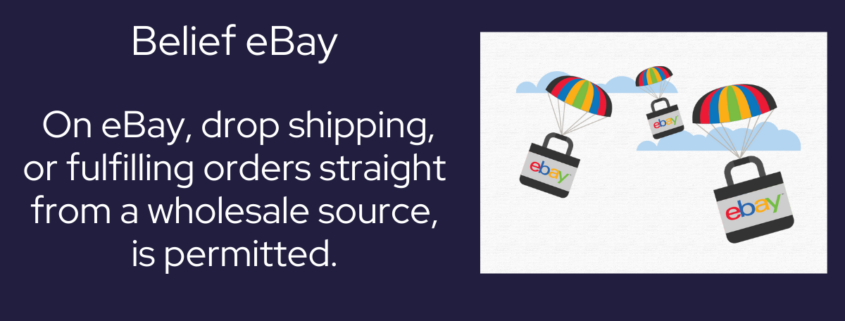
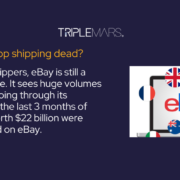

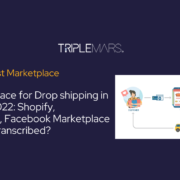
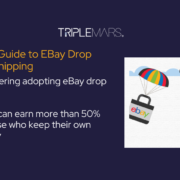









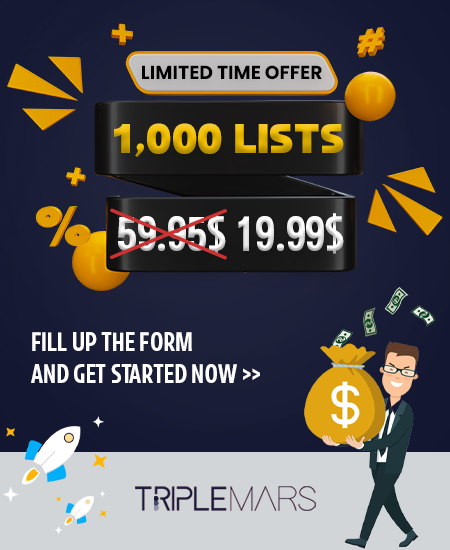



Leave a Reply
Want to join the discussion?Feel free to contribute!